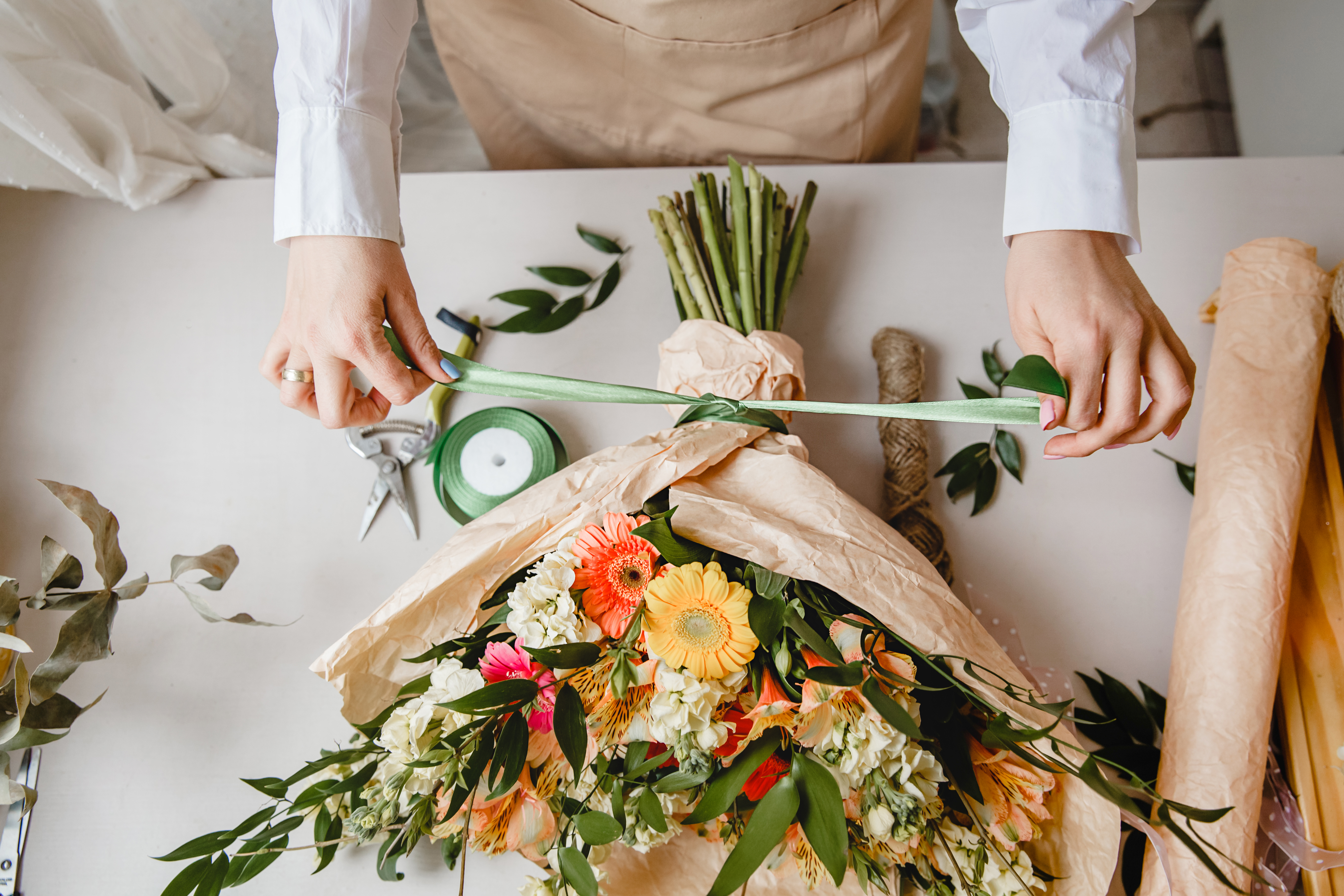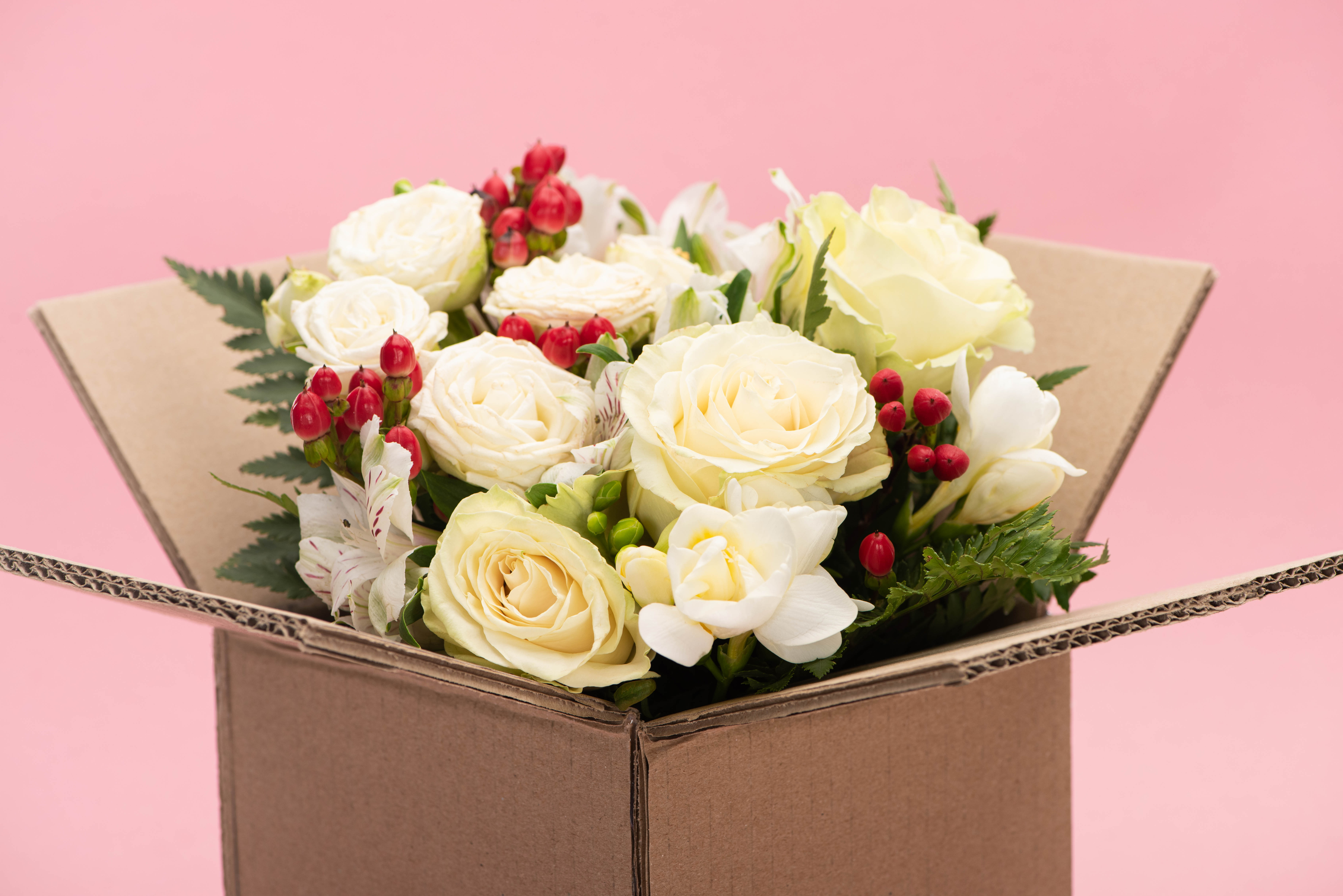How to Package Fresh Flowers for Shipping
14th Feb 2024
Shipping fresh flowers requires attention to detail to ensure they arrive at their destination in excellent condition. The process of packaging plays a key role in preserving the freshness and appearance of the flowers throughout their journey.
Here, ASC looks at the best practices for how to best ship flowers. From selecting the right shipping materials to the final steps of securing and dispatching the package, each stage helps the flowers maintain their quality and arrive as intended. Whether for business or personal purposes, understanding these packaging techniques is essential for successfully shipping flowers and ensuring the flowers arrive safely.
Packaging Materials for Fresh Flowers
The journey of fresh flowers from grower to recipient is delicate, and the choice of packaging materials is often the difference between a happy giftee and a disappointed one. The primary goal is to maintain the flowers' freshness and prevent any physical damage, and one of the most effective packing materials to achieve this is bubble wrap. This versatile cushioning not only protects the flower stems and blooms from jostling and impact during transit but also helps insulate them from temperature variations, keeping them fresh.
For the flower stems, especially those in arrangements, moistened foam is an excellent choice. It keeps the stems hydrated, ensuring the flowers remain fresh and vibrant throughout their journey. In addition, clear plastic sleeves can be used to encase the blooms, protecting them from dehydration and damage, while allowing their beauty to be visible.
Cardboard inserts and dividers are useful for keeping individual flower arrangements or bouquets secure within the box. These inserts prevent the flowers from shifting and getting crushed against the sides of the box. For larger floral arrangements, sturdy boxes with ample space are ideal, allowing for enough room to accommodate the blooms without compressing them. On the other hand, for smaller, more delicate arrangements or single stems, compact and slimline boxes, similar to those in ASC's range, offer a perfect fit, ensuring minimal movement and maximum protection.
Lastly, you should always include packing peanuts or crumpled paper in any empty spaces within the box. This additional padding helps absorb shock and keeps the flowers firmly in place, reducing the risk of damage during transit.
Choosing the Right Box for Shipping Flowers
Shipping flowers cannot be done without the right box - one that ensures the flowers are protected and remain intact during transit. Considerations for choosing the box include:
- Tall, end-opening boxes: ideal for long-stemmed flowers such as roses or lilies. These boxes provide enough space for the length of the stems and facilitate easy insertion and removal of the flowers.
- Large boxes: necessary for bigger flower arrangements. They should offer ample room to fit the entire arrangement and additional protective materials without compressing the flowers.
- Compact, letterbox-friendly boxes: suitable for smaller arrangements or single stems. These boxes are designed to fit through standard letter slots, providing a secure option for smaller deliveries.
- Material of the box: sturdy, corrugated cardboard is typically preferred for its combination of strength and lightness. The box should be neither too large (to prevent excessive movement) nor too small (to avoid crushing the flowers).
- Insulation considerations: in cases of extreme weather, boxes with insulation may be necessary to protect temperature-sensitive flowers.
- Presentation: for special occasions or premium arrangements, the external appearance of the box can add to the overall experience.
Choosing the right box involves understanding the specific needs of the flowers and the conditions they will be shipped under. It's about balancing the cost with the size, material, and type of the box to ensure flowers are delivered in optimal condition.

Preparing Flowers for Shipping
Proper preparation of flowers for shipping is important in ensuring their longevity and condition upon arrival. Follow these steps to prepare flowers effectively:
- Hydration: initially, hydrate the flowers thoroughly. Soak the stems in fresh, cool water for several hours. This pre-hydration is key to maintaining freshness during transit.
- Trimming the stems: use a clean, sharp instrument to cut the stems at a 45-degree angle. This angled cut increases the surface area for water uptake and prevents the stems from resting flat against the container bottom, which can impede water absorption.
- Removing excess foliage: strip off any leaves that would be submerged in water in the arrangement, as they can decompose and encourage bacterial growth. Keep sufficient foliage for aesthetic purposes.
- Pre-treatment: use a commercial floral preservative in the water, which provides nutrients and inhibits bacterial growth. A homemade solution of sugar and a small amount of bleach can be an alternative.
- Wrapping individual stems: for single stems or small bouquets, wrap the wet ends with moistened floral foam or cotton wool, then cover this with a plastic bag and secure it. This maintains stem hydration.
- Protecting the blooms: for delicate blooms, use tissue paper or soft paper cones for additional protection against bruising and damage.
- Temperature management: in extreme weather, consider using insulated liners or cold packs, ensuring they do not directly contact the flowers.
- Final inspection: conduct a final check to remove any damaged petals or leaves, ensuring only high-quality flowers are sent

Packing Flowers in Boxes
Packing flowers in boxes for shipping is a delicate task that requires attention to detail to ensure the flowers arrive in the same condition they were sent. Here’s a guide to packing flowers in boxes effectively:
- Choose the right box: as previously discussed, selecting the appropriate box size is an important step. Ensure the box can accommodate the flowers without bending or squashing them. For long-stemmed flowers, use tall, end-opening boxes; for larger arrangements, select bigger, spacious boxes; and for small bouquets or single stems, compact, letterbox-friendly boxes are ideal.
- Line the box for protection: start by lining the box with a layer of bubble wrap or foam. This layer acts as a cushion, protecting the flowers from bumps and bruises during transit.
- Position the flowers: carefully place the prepared flowers or bouquet inside the box. If you’re sending individual stems or small bunches, secure them with tie wraps or soft ties to keep them in place. For larger arrangements, make sure they fit snugly to prevent excessive movement.
- Fill the gaps: use crumpled paper, packing peanuts, or additional bubble wrap to fill any empty spaces in the box. This step prevents the flowers from shifting and potentially getting damaged.
- Secure the top: once the flowers are snugly in place, add a final layer of protective cushioning on top. This could be a soft layer of tissue paper or a thin foam sheet.
- Seal the box: carefully close the box, ensuring not to apply excessive pressure on the flowers. Seal the box securely with strong packing tape. Remember, the box needs to be secure, but also easy to open upon arrival.
- Label the box: label the box clearly with “Fragile” and “This Side Up” indicators. It’s also helpful to include a note about keeping the box in a cool, shaded area if possible, to preserve the freshness of the flowers.
- Provide unpacking instructions: inside the box, or attached to it, include instructions on how to unpack the flowers. This guidance can help the recipient care for the flowers immediately upon opening, which is important for their longevity.
By following these steps, you can pack flowers in a way that not only ensures they arrive safely and fresh but also demonstrates care and professionalism. This careful packing process plays a vital role in the overall experience of receiving a floral gift, making it as delightful and memorable as possible.
Securing and Sealing the Package
Once the flowers are properly placed and cushioned inside the box, the next step is securing and sealing the package. This step is vital in the delivery process, ensuring the flowers reach their destination safely and in pristine condition. Here’s how to do it:
- Check for movement: before sealing the box, give it a gentle shake to check if there’s any movement inside. If you hear or feel the contents shifting, open the box and adjust the padding or flowers. The goal is to immobilise the flowers to prevent damage during transit.
- Seal the box securely: use strong packing tape to seal the box. Make sure to tape not only the opening but also reinforce the edges and corners of the box, as these areas can be vulnerable to wear and tear during shipping. It's essential to use a tape that adheres well to your box material and remains secure in varying temperatures.
- Add reinforcement if necessary: for larger or heavier boxes, consider strapping or banding the box for extra security. This reinforcement can prevent the box from bursting open, especially if it's under strain or pressure during handling.
- Label clearly: clearly label the box with ‘Fragile’ and ‘This Side Up’ stickers. This alerts couriers and handlers to treat the package with extra care. It's also helpful to include a label indicating that the box contains perishable items, which can prompt quicker and more careful handling.
- Provide handling instructions: consider attaching handling instructions or a note to the outside of the box, advising couriers on the ideal storage conditions (e.g., keep away from heat sources, avoid leaving in direct sunlight, etc.). While not all couriers may be able to follow these instructions, providing them can help in some situations.
- Include return information: on the outside of the box, include the sender's address and contact information. This can be important if the package needs to be returned or if there are delivery issues.
- Document the package: before sending the package off, take a photo of the sealed box with its labels and tape. This documentation can be helpful in case there are disputes or issues with the delivery.
Final Check and Dispatch
The final check and dispatch stage is the last opportunity to ensure everything is in order before the flowers begin their journey to the recipient. Here's how:
- Review packing list: if you have a packing list or an order form, review it one last time to ensure that everything matches. Check that the right type of flowers, the correct number of stems, and any additional items like personal notes or care instructions are included.
- Inspect the box: give the sealed box a final inspection. Ensure that all sides are securely taped, labels are clear and correctly placed, and that the box doesn't have any visible damage or weak spots.
- Temperature considerations: consider the current weather and temperature conditions. If it's particularly hot or cold, think about the route the package will take and how long it will be in transit. If necessary, add a last-minute cold or heat pack to help regulate the temperature inside the box.
- Shipping service selection: choose a reliable shipping service that can provide the appropriate care and speed for flower delivery. Opt for services that offer tracking and, if possible, same-day or next-day delivery to minimise the time flowers spend in transit.
- Document the dispatch: record the dispatch details, including the tracking number, courier service used, and expected delivery date and time. This information is needed for both the sender and the recipient to track the package’s journey.
- Communication with the recipient: if possible, inform the recipient that a perishable package is on its way. This notice can help them prepare for the delivery and ensure someone is available to receive the flowers promptly.
- Backup plan: have a contingency plan in place in case of delivery issues. This might include customer service contacts, refund or replacement policies, and a process for handling delayed or damaged deliveries.
- Final dispatch: once everything is checked and confirmed, dispatch the package. Ensure it is handed over to the courier service safely and with all necessary handling instructions.
Shop Now
Take a look at our packaging options today or take a look at our Box Builder to see how you can create your own perfect box.

James Palfrey-Smith is the Commercial Manager at ASC Direct with extensive experience in both operations and sales. James is passionate about solving packaging problems, delivering fast customer support, and building lasting relationships. Outside of work, he enjoys outdoor activities like hiking and skiing. A fan of real ale and business podcasts, he continuously seeks personal and professional growth.
Find James on Linkedin
Find out more about James

